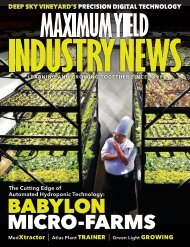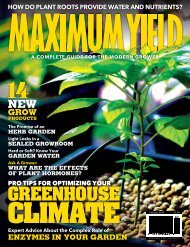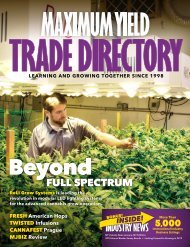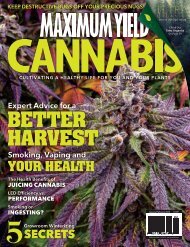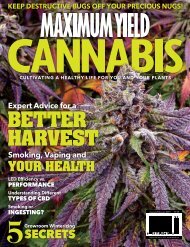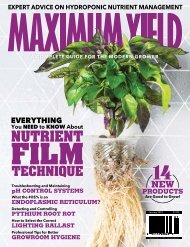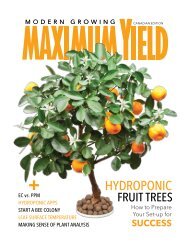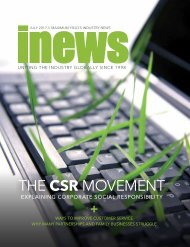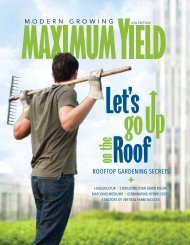Maximum Yield Modern Growing | Canadian Edition | May June 2017
In this issue of Maximum Yield, we cast a wide net to bring you the best and latest information possible to help you get started growing your own food. From the basics like cleaning your equipment to the best methods for preparing your plants to live outdoors, to more advanced topics like lighting and nutrient delivery, there is something in this issue for all levels of grower.
In this issue of Maximum Yield, we cast a wide net to bring you the best and latest information possible to help you get started growing your own food. From the basics like cleaning your equipment to the best methods for preparing your plants to live outdoors, to more advanced topics like lighting and nutrient delivery, there is something in this issue for all levels of grower.
Create successful ePaper yourself
Turn your PDF publications into a flip-book with our unique Google optimized e-Paper software.
microponics<br />
• Live animal protein—black soldier<br />
fly larvae, feeder roaches, mealworms,<br />
and worms<br />
• Farmed rabbits<br />
• Snails<br />
• Mushrooms and fungi<br />
• Other forms of microlivestock—<br />
heritage breeds of goats, pigs, and<br />
sheep—even microcattle, such as<br />
the ancient Irish breed, the Dexter.<br />
APPLIED MICROPONICS<br />
Okay, so what does the integration look<br />
like on a practical level? Currently,<br />
we grow fish, vegetables, herbs, trees,<br />
Japanese quail, chickens, black soldier<br />
fly larvae, worms, and duckweed.<br />
Here’s how our microponic unit works:<br />
• The fish provide nutrients for plants<br />
(including duckweed) and the plants<br />
clean the water for the fish.<br />
• Plant residues and fish<br />
processing wastes are fed to<br />
black soldier fly larvae. The<br />
larvae are fed to fish, chickens,<br />
and quail.<br />
• The chicken and quail meat and<br />
eggs go to the kitchen and the<br />
viscera (guts) are fed to the black<br />
soldier fly larvae. The feathers are<br />
composted.<br />
• The castings from the larvae<br />
(which retain up to 50 per cent of<br />
their original protein level) and<br />
kitchen scraps are fed to worms.<br />
• The worm castings are mixed with<br />
compost and used as a soil conditioner<br />
for trees, vegetables, and<br />
fodder plants; the worms are fed to<br />
fish, chickens, and quail.<br />
• Chickens fertilize the trees and<br />
keep weeds at bay. They also eat<br />
spoiled fruit and the fruit fly larvae<br />
that it contains.<br />
• Other chickens and quail eat the<br />
fodder plants and provide manure<br />
(and eventually feathers and other<br />
processing wastes) for worms,<br />
black soldier fly larvae, and<br />
composting systems.<br />
The important thing about<br />
microponics is that there is no<br />
such thing as waste—everything<br />
becomes part of the nutrient cycle.<br />
Waste heat from chick brooders and<br />
lights (and even the waste body<br />
heat from animals or birds) can<br />
be used to modify environments<br />
in favour of other organisms.<br />
The scope of such integrations is<br />
limited only by one’s imagination.<br />
The integration of fish, plants,<br />
and microlivestock leverages the<br />
volume and quality of the food<br />
that we grow and it makes for a<br />
healthier and more resilient food<br />
production environment.<br />
Our goal is to put clean, fresh<br />
food on the dinner table, so we<br />
use what works best—for the<br />
fish, plants, microlivestock, and<br />
other organisms, and that’s what<br />
microponics is all about!<br />
54 grow cycle




